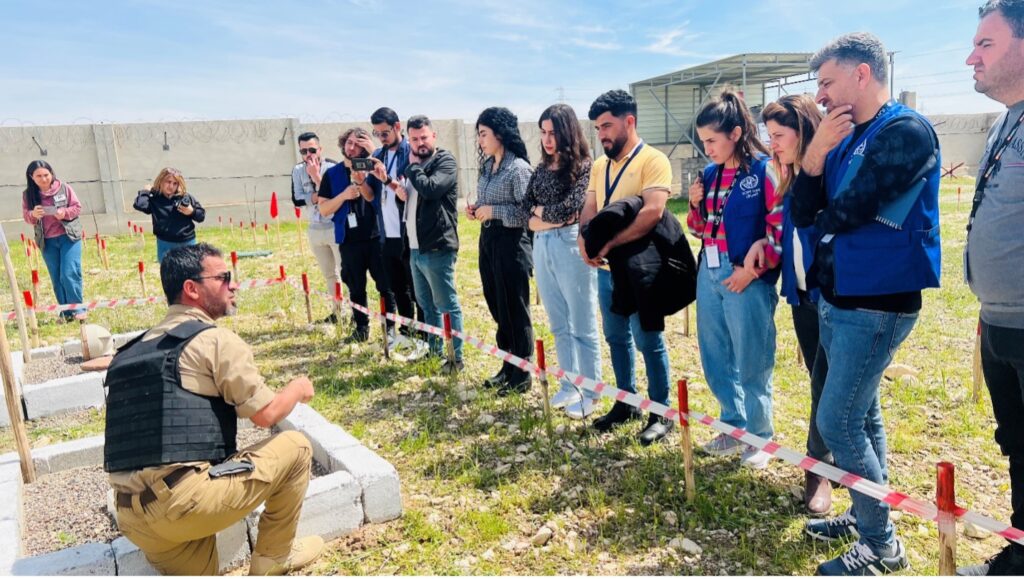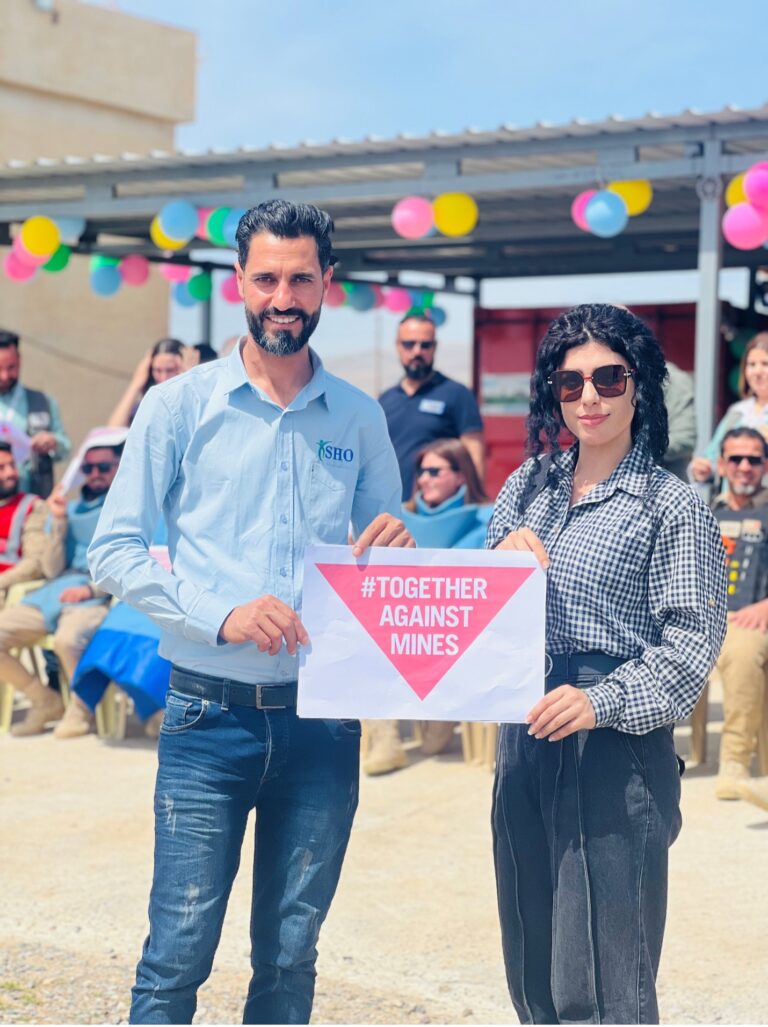International Day for Mine Awareness and Assistance in Mine Action

HAMAP-Humanitaire, alongside its partner Shareteah Humanitarian Organization (SHO), have observed the International Day for Mine Awareness and Assistance in Mine Action, thanks to the support of the Crisis and Support Center of the Ministry of Europe and Foreign Affairs.
The event took place in Sinjar District of Ninawa governorate of Iraq, where SHO has coordinated with local and international NGOs operating in the area, and local community. Attendees were welcomed to the operation compound, where the Safer Sinjar project’s main objectives were clarified. The project aims to identify and clear Explosive Remnants of War (ERW)in the region, creating safer environments for the people living there.
During the event, attendees were introduced to capacity-building training programs led by HAMAP-Humanitaire Operation Manager Advisor. These programs were designed to enhance the capacities of Shareteah Humanitarian Organization (SHO). The training programs included Explosive Ordnance Disposal (EOD) and Improvised Explosive Device Disposal (IEDD). These training programs are critical for individuals involved in mine action, as they provide the necessary skills and knowledge to safely and effectively dispose of explosive hazards.
During the event, the importance of gender mainstreaming in mine action programs was also emphasized. It was explained that young men and women from the Sinjar community were selected and trained based on national and international standards. This approach to training ensures that individuals are endowed with the skills and knowledge necessary to conduct mine action activities safely and efficiently.
The sustainability of mine action programs is crucial in ensuring the long-term safety and security of affected communities. One of the key factors in achieving sustainability is building the technical capacity of local communities, as this ensures that the necessary skills and knowledge remain in the area even after international organizations have left. It was explained to the attendees that HAMAP-Humanitaire has recognized the importance of local capacity building and has made it a priority in their mine action programs. By building the technical capacity of the local community, HAMAP-Humanitaire is contributing to the sustainability of mine action programs in the area.
The SHO EORE/NTS team leader provided an overview of the Explosive ordnance risk education (EORE) and NTS components of the project, emphasizing the importance of these programs in reducing the risk of accidents involving legacy explosives. She highlighted various methods such as puppet shows, virtual reality (VR), distribution of Information, Education and Communication (IEC) materials, games like snake and ladder, and door-to-door outreach of the community. The team leader explained that these methods are used to inform community members about the risks associated with explosive ordnance as well as ways to prevent accidents from occurring.
The SHO team leader emphasized that children are a key focus of the EORE activities. Children are often the most vulnerable to explosive ordnance accidents, as they may not fully understand the risks associated with these devices. The EORE/NTS team leader highlighted the importance of using innovative approaches to reach community members and promote safe behavior. The focus on children also demonstrated the commitment of SHO and its partners to protecting the most vulnerable members of the affected communities.
SHO EORE/NTS team leader talked about the None-Technical Survey (NTS) as a critical component of Safe Sinjar Project. Basically, NTS helps identifying areas that are contaminated with explosive ordnances and prioritizes areas for clearance activities. The SHO team leader explained how NTS is carried out in Sinjar District, with coordination and support of the DMA, and how the information collected is used to inform mine action activities.
The final part of the event was occupied by the clearance team activities. SHO Operation Manager Assistant discussed the importance of coordination between SHO, HAMAP and the Directorate for Mine Action (DMA) in managing the overall clearance activities of the Safe Sinjar Project. This coordination helps ensure that the clearance activities are carried out in a systematic and effective manner, with the involvement of all relevant stakeholders. The Operation Manager Assistant emphasized that this coordination is critical to the success of the project and the safety of all involved. He also emphasized the importance of effective coordination and communication between all stakeholders involved in mine action programs, as well as the critical role played by the local community in reporting and identifying areas contaminated with explosive ordnances.
The clearance team, consisting of trained professionals, demonstrated the techniques and tools used in the clearance activities. They also explained the importance of following standard operating procedures (SOPs) and safety protocols during clearance activities to prevent accidents and ensure the safety of all involved. The attendees were given an opportunity to observe the clearance team in action, and to ask questions about the clearance process and the challenges faced by the team. Overall, the activities of the clearance team provided an important opportunity for the attendees to gain a better understanding of the clearance process and the challenges faced by the clearance team. It also demonstrated the commitment of SHO and HAMAP to ensuring the safety of all members of the affected communities and the importance of effective coordination and communication in the success of mine action programs.


